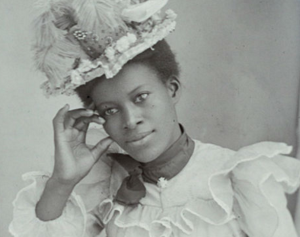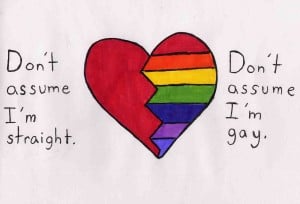
Source: 217 Church
So you’ve read “Let’s Talk About Domestic Violence in the Trans Community” and you think that a trans-identified friend or family member may be in an abusive relationship. Now what?
It’s not easy to approach a loved one about their abusive relationship. And once your loved one recognizes that they are in an unhealthy relationship, where do you go from there?
If you read “Let’s Talk About Domestic Violence in the Trans Community,” you know that not only does domestic violence in the trans community play out in slightly different ways, but trans survivors often face obstacles when trying to access resources.
I sat down with Loree Cook-Daniels from FORGE to discuss different strategies that trans survivors and their allies have used to navigate their way.
But first: a word about wording, which you might recognize from my last piece.
In discussing domestic violence, we often hear policy makers and journalists refer to the recipients of domestic violence as victims. Using the victim label allows us to clearly delineate roles and further understand the power dynamics in domestic violence.
However, service providers who actually work with individuals affected by domestic violence will usually refer to their clients as survivors.
Referring to oneself as a survivor allows the individual to begin the process of recovery and move on from the victim role. For this purpose, we will be referring to victims as survivors in this piece.
We also understand that not everyone identifies with gender-specific pronouns such as he and she. We apologize in advance if the use of they and their in this article sounds confusing or impersonal. Our intent is to be more inclusive.
Also: a word about domestic violence.
Domestic violence goes beyond physical abuse. It can also include verbal and psychological abuse, sexual abuse, and financial abuse.
Domestic violence also goes beyond intimate partners. Domestic violence abusers can include family members and close friends.
For more on the basics of understanding domestic violence, see here.
1. Educate Yourself and the Survivor about Abusive Relationships
Having the initial conversation with a domestic violence survivor is perhaps the toughest part of the process. There are ups and downs where the survivor may blame themself, deny the abuse, and even change their mind about leaving.
Here are some reasons survivors stay in an unhealthy relationship and how you can transform them into moments of empowerment:
They say: “This is normal. This is not domestic violence.”
You say: “Nothing about abuse is normal. This is domestic violence.”
Call it what it is.
If a loved one is exerting their power physically, financially, emotionally, or sexually to inflict fear or harm, it’s abuse. If that abuse is occurring in an intimate relationship (between romantic partners, friends, or family), it’s domestic violence.
Domestic violence does not happen to a particular group or gender. Just because they are not a heterosexual, cisgender male doesn’t mean they can’t be an abuser. No one is immune.
They say: “It’s my fault that this happens.”
You say: “Domestic violence is not your fault. You are not responsible for (your abuser’s) behavior. You do not deserve this.”
It is not your fault when someone resorts to violence and abuse. Just because it happens to you doesn’t mean you deserve it.
Domestic violence occurs when an abuser uses their power to deal with anger and conflict. Your gender identity does not mean you deserve abuse. No one deserves abuse.
They say: “It won’t happen again. They love me.”
You say: “Love should not hurt like this. Don’t wait for it to happen again.”
In domestic violence, a period of apologies and making up called the “honeymoon phase” usually follows abuse. When the abuse happens again, it is usually more intense and escalates over time.
Don’t doubt the love. Domestic violence abusers do love their survivors. Love just shouldn’t hurt.
2. Avoid Painting the Abuser as a ‘Bad Person’
It is easy to paint the abuser as a bad person, because this person is hurting your loved one. However, it is not easy for a survivor to hear.
Remember that the survivor still has very real emotional connections and must take the first step.
It can be difficult for survivors to simply leave abusive relationships because they may still have very strong feelings for their abusers. Remember that though the relationship may be abusive now, the survivor may be holding onto memories of better days.
Despite the abuse, the survivor and abuser still care for one another. Labeling the abuser as a criminal or bad person can turn off the survivor from getting help.
Offer support without judgment or criticism. Do not criticize the survivor for staying in the relationship. It’s never that easy when your abuser is someone you love.
3. Resist the Temptation to Drive the Bus
It will be tough to watch your loved one as they waver back and forth between staying and leaving an unhealthy relationship. You will be tempted to take control and do all the work in getting them out.
Avoid the temptation to be a savior.
Let the survivor know that they are not alone. Give the survivor resources and numbers they can call. Offer to help draft their questions and talking points or even visit a service provider together.
Empower the survivor to drive their own bus, but don’t drive the bus for them.
The best way to help a survivor is to give them back control. By “driving the bus” for the survivor, you allow the survivor to leave one unhealthy relationship and enter another.
It may sound like it’s not enough, but it means a lot: “I am here to talk if you need me. I am concerned for you, and I am here to support you.”
4. Devise a Comprehensive Safety Plan
Safety planning gives survivors control and power to increase their level of safety. It occurs while the survivor is living with the abuser and planning to leave.
Be prepared. As the relationship gets more and more abusive, a survivor may need to rely on a safety plan sooner than expected.
The components of safety planning can also look different for trans survivors of domestic violence. The following are some basic ways you can help safety plan. Check out FORGE’s Safety Planning Tool for a more comprehensive list of resources specific to trans survivors.
Lay the Ground Work as You Prepare to Leave
In addition to extra change of clothes, trans survivors have a few extra items to consider.
Name-change documents (both state and federal) need to be acquired, as some abusers hold onto these items to maintain control. To obtain copies of these, you may need to help the survivor with costs and logistics, such as driving them to the agency and using your mailing address to secure documents.
Trans survivors also need to consider procuring prosthetics, which may be difficult to replace because of size and cost. Wigs, razors, binders, and stand-to-urinate devices are essential to leaving as these items maintain their identity and consequently can provide safety in public spaces. Survivors must also secure hormones and prescriptions for hormones.
You may also help the survivor hold onto extra change of clothes at your own home, especially if the survivor has difficulty finding clothes in their size.
Identify Service Providers and Support Options
Find out what domestic violence services are available in your area. Ask them about safe housing, counseling, and other services available.
The National Domestic Violence Hotline is a good place to start. Their number is 1-800-799-SAFE (7233), and their TTY number is 1-800-787-3224.
Strategize Ways to Stay Safe(r) at Home
Deciding to leave an abusive relationship does not prevent the survivor from experiencing abuse at home. Until the survivor leaves the relationship and finds a safe place and routine, the survivor is not safe from abuse.
You can, however, help the survivor strategize ways to stay safer at home. What are some strategies that have helped in the past when dealing with the abuser? Who can they call if things get out of control? This may involve coming up with a code word to use in emergency situations.
Practice these strategies with the survivor.
First, look for escape routes with the survivor. Find out where most abuse occurs, and practice ways to stay safe(r) and/or ways to get out with the survivor. Recruit trustworthy neighbors who can call the police when needed.
Protect Children and Pets
It’s important not to forget any children and/or pets involved.
Help the survivor secure birth certificates, school and vaccination records, prescription medicine, and any custody or adoption records for children. Make plans for who will take care of pets if the survivor needs to leave.
If children or pets are involved, survivors should include them in their escape plans as well. Teach children not to get involved in fights to ensure their safety. Older children can practice dialing 911 or a close friend or family member in an emergency.
Schools, day cares, and babysitters should be notified of which neighbors or close friends have permission to pick up children in an emergency. Also notify schools, daycares, and babysitters if your abuser is not allowed to pick up the survivor’s children and give them a copy of any restraining orders or protection orders.
Seek a Protection Order
All states offer some people legal orders of protection when they are threatened. Some states may differ in the types of situations they cover. Check with your state’s requirements. More state-by-state information about restraining orders can be found here.
A protection order will not prevent the abuser from harming the survivor, but it does offer legal repercussions if it does occur. Survivors may also experience faster response and more cooperation from law enforcement if the abuser does show up at home or at work.
Plan Your Financial Future
Whatever financial savings the survivor can put aside will increase their options. Survivors also might need to open up a new banking account, especially if their abuser shares access to their current account and account passwords.
Once the survivor leaves, the survivor should only use this new account so that the abuser is unable to track their location and activities. Also make sure the survivor opts for paperless statements from the bank.
Improve Cell Phone, Cyber, and Tech Safety
Survivors need to be aware of the risks when using cell phone and being online; abusers may be able to track survivors’ activities and locations.
When possible, have survivors use public computers and use pay-as-you-go phones. Survivors should also change passwords and use cash instead of credit cards that provide paper trails. When possible, survivors should keep important information like contacts and bank account numbers on a cloud storage or stored where the abuser cannot access it.
Some programs such as SafeLink are available, which provides 250 minutes of talk time and 1,000 texts for survivors. With no billing or credit check process, survivors can maintain autonomy from their abusers.
***
This is a lot to take in. During this process, you will sometimes feel overwhelmed as you try to provide the appropriate technical and emotional support for your loved one. Don’t give up.
Since traditional services may not be available yet for trans survivors of domestic violence, your support is more important than ever.
But you don’t need to be an expert. You just need to be there.
[do_widget id=”text-101″]
This article was written in collaboration with Loree Cook-Daniels, the Program and Policy Director at FORGE. FORGE was founded in 1994 in Milwaukee, Wisconsin, to provide peer support primarily to those on the female-to-male (FTM) gender spectrum and local Significant Others, Friends, Family, and Allies (SOFFAs). Over the years, FORGE’s scope has grown to include everyone in the transgender community (which they define as including SOFFAs), and many of their programs have become national.
Loree has been a policy analyst and advocate for LGBT issues for more than 35 years, and began working on anti-violence issues in the 1980s. She holds degrees in Women’s Studies and Conflict Management, and a Certificate in Trauma Counseling. She currently provides training, technical assistance, and/or services to transgender sexual violence survivors and the professionals who serve them under grants from the U.S. Office of Victims of Crime and the U.S. Office of Violence Against Women. Find out more at www.forge-forward.org.
Amy Sun is a contributing writer for Everyday Feminism. She has worked with providing resources and support for Asian/Pacific Islander survivors of domestic violence in the DC, Maryland, and Virginia areas. She also holds her Masters in Women’s Studies from the George Washington University, where she has researched the coming out processes for trans who identify as FTM and MTF.
Search our 3000+ articles!
Read our articles about:
Our online racial justice training
Used by hundreds of universities, non-profits, and businesses.
Click to learn more




















